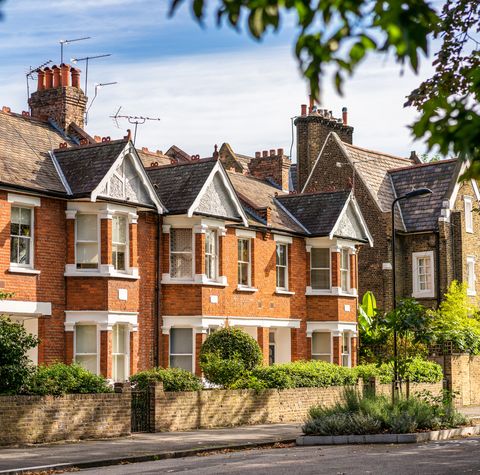New research published today charts a typical Londoner’s property journey, highlighting the locations attracting the most interest from first-time buyers, second steppers, and “top of the ladder” buyers searching for big family homes.
We start off wanting a not-very-expensive flat in a leafy north London
village, then take the second step to a smallish house in the same
area, and finally cross the river to buy the “forever” home, according
to the study by Rightmove.
Top London areas for first-time buyers
The three most popular locations identified by the study for a
starter home — defined as anything from a studio to a two-bedroom flat —
are far north of the river: Kentish Town, Stoke Newington and Highbury.
These are clearly not the most expensive, established north London
postcodes but flats in top-choice Kentish Town are about a third cheaper
than those in Hampstead, two miles away.
“We get loads of first-time buyers who have been renting in Camden,
Islington or Primrose Hill, and when they buy they just move up the
Northern line,” says Charlie Cockcroft, director of Dexters estate
agents.
“They like the fact that the style of house is very similar, and you have got the Tube and London Overground.”
Kentish Town is also within walking distance of Hampstead Heath and
has some great pubs including The Vine and The Lord Palmerston, while
Parliament Hill’s lido and tennis courts are up the road.
Grimy and traffic-choked, Kentish Town Road is a minus. Cockcroft
agrees but says change is happening. “We have got a Gail’s Bakery now,
and a Franco Manca pizza restaurant, and that is an improvement, We need
more high-profile brands.”
Stoke Newington and Highbury are also key areas for first timers,
along with Dalston — technically in east London but in fact just south
of Stokey. The only exception to the north London rule is affordable Forest Hill in SE23, the least expensive of the top five.
Top locations for second-steppers
Buyers trading up the ladder have an affection for north and
north-east London. Highbury, Dalston and Kentish Town are the top
locations for three- or four-bedroom homes.
South London regeneration zone Elephant and Castle
is a slightly surprising entry in fourth place. But alongside thousands
of new flats and billions being spent on new facilities, plus fabulous
Zone 1 transport links, the Elephant has larger properties, old and new,
for families.
Top of the wish list is likely to be one of the amazing Georgian
houses in West Square, for which you can expect to pay about £2.5
million for a four-bedroom home. While West Square is a five minute walk
from Elephant and Castle station, Tom Floyd, sales manager of
Winkworth, says residents tend to claim they live in “north Kennington”.
For a more budget-friendly option, Floyd recommends an early
Victorian terrace house in a road such as Henshaw Street. A
three-bedroom, 1,100sq ft house here would set you back between £850,000
and £900,000.
“Buyers tend to be young families in their early thirties selling a
flat somewhere like Borough, not ready to move much further out and
wanting their children to be able to stay at their schools,” says Floyd.
There are also three-bedroom flats at Elephant Park, the new homes at
the heart of Elephant and Castle’s rebirth. Lendlease is currently
selling a 1,247 sq ft triplex here for £1.2 million. At The Levers,
another new development, in Amelia Street, Hastings International has a
three-bedroom 976sq ft apartment priced at £750,000. Floyd says a
three-bedroom period flat — Charleston and Larcom streets, both in SE17
towards Walworth, are recommended — would cost between £600,000 and £700,000.
Where buyers find their forever homes
Buyers searching for plenty of space, with five bedrooms or more, are
looking south-east towards Forest Hill for affordable large period
houses and green spaces. On the downside Forest Hill lacks a heart, so
locals need to go to either East Dulwich or Peckham because local restaurants and bars are a bit boring.
Javaid Ahmed, sales manager of Kinleigh Folkard & Hayward,
divides Forest Hill into three zones. The most expensive is around the
fabulous Horniman Museum, where a five-bedroom Edwardian house or a
Thirties semi would cost about £1.2 million.
Houses around Honor Oak Park are a little smaller, and you could buy a Victorian terrace for about £900,000.
The best value is around Stanstead Road, towards Catford and further
from the station, where a Victorian property would cost £800,000 to
£850,000. In East Dulwich, five minutes’ drive away, a five-bedroom
house would cost about £1.4 million.
“Around Horniman Gardens there is a nice sense of community, the
primary schools are good and it feels safe and calm,” says Javaid Ahmed.
It is also a very easy commute, with trains to the city taking 15 minutes.
Top-of-the-ladder family house buyers also go to Islington for a
gorgeous Georgian, Camberwell which has fabulous enclaves of Georgian
townhouses, Stoke Newington and, back in north London, Holloway.
https://www.homesandproperty.co.uk/property-news/best-areas-in-london-for-home-buyers-where-firsttimers-second-steppers-and-forever-househunters-a132166.html













